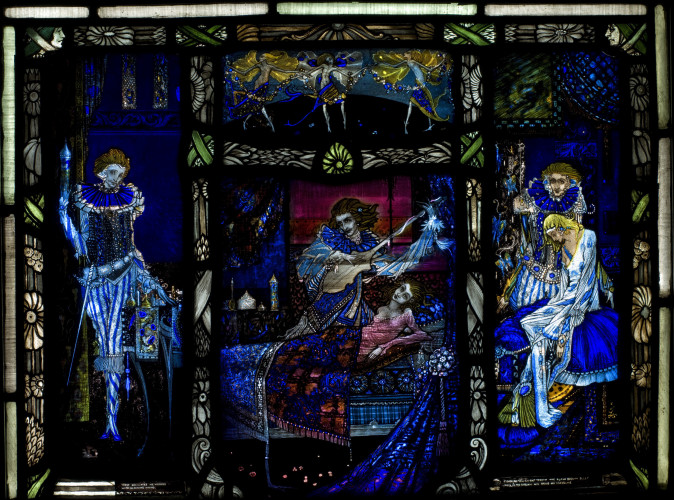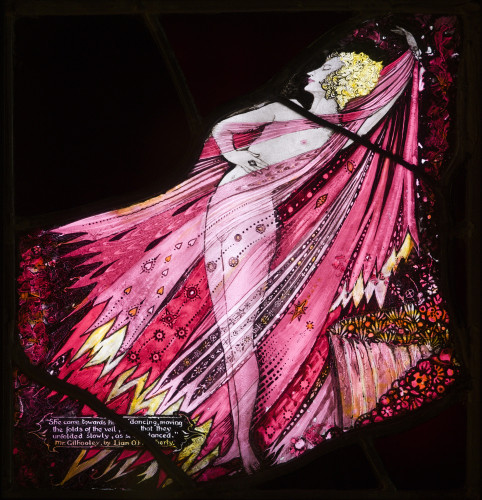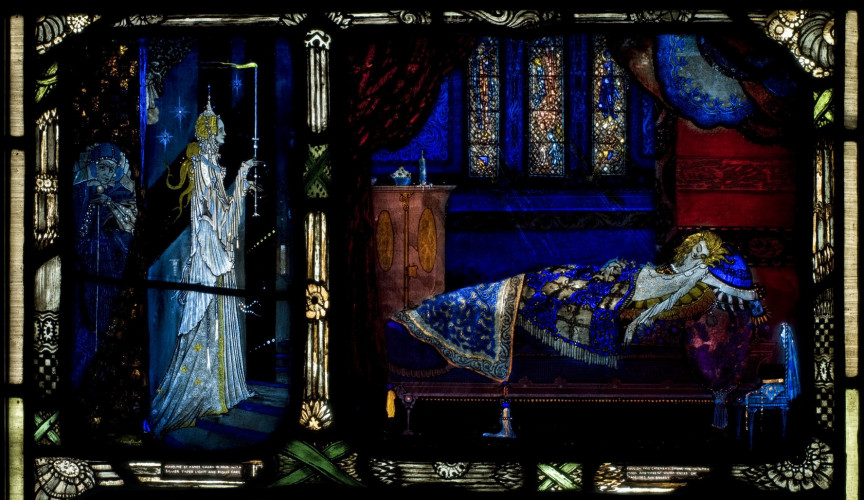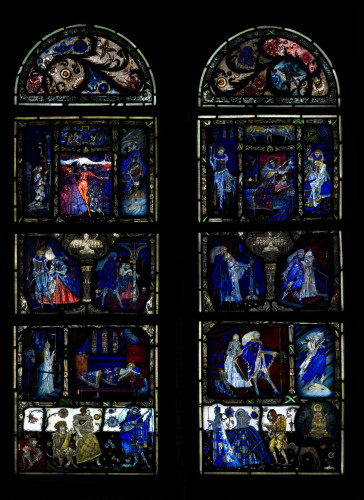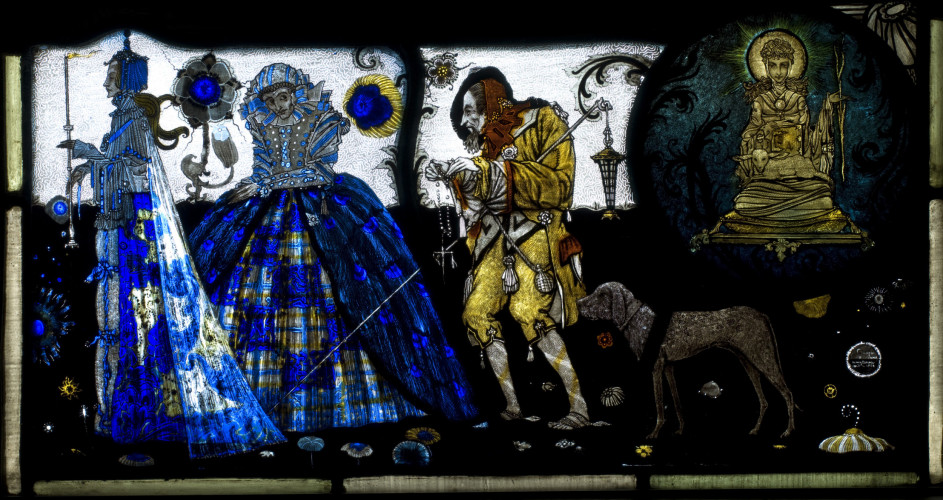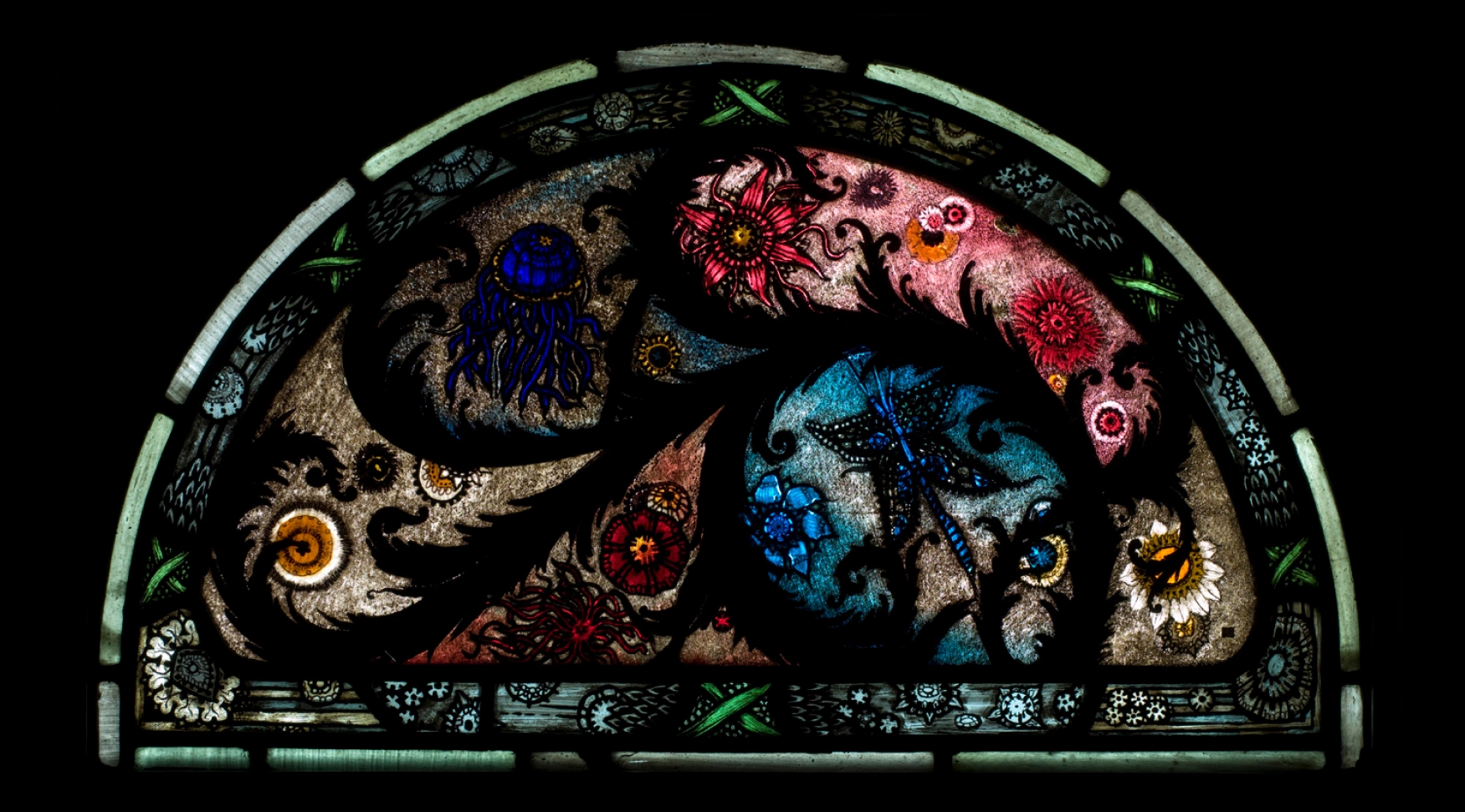
Harry Clarke
Harry Clarke was born on 17 March 1889 in Dublin and died on 6 January 1931. Harry Clarke worked in his father’s, Joshua Clarke, stained glass studio which was at the back of their house at 33 North Frederick Street, as well as being a student at the Metropolitan School of Art in Dublin. He was a talented student and won scholarships which meant he could travel to France and England to see the magnificent stained glass windows in the medieval churches there. He entered competitions at the South Kensington School of Art and Design in London and won gold medals for the stained glass designs he submitted.
Following his studies, Harry Clarke worked as a book illustrator for the London publisher Harrap and was highly praised for his drawings for Edgar Allan Poe’s Tales of Mystery and Imagination and for Goethe’s Faust. Harry Clarke loved reading and going to the theatre and much of his art is inspired by great plays, fairy tales and legends. Between 1915 and 1917 Harry Clarke made eleven stained glass windows for the Honan Chapel at University College, Cork and from then on he received many important commissions for his stained glass work.
The Hugh Lane Gallery currently has a display of Harry Clarke's work, The Eve of St. Agnes and Mr Gilhooley by Liam O'Flaherty, in the Stained Glass Room.
-
The Eve of St Agnes
+In April 1923 a Mr Harold Jacob asked Harry Clarke to design a stained glass window for the landing of his father’s house in Ailesbury Road in Dublin. Harold Jacob was the owner of the famous Jacob’s biscuit factory. Stained glass was usually associated with religious art in churches so it was an exciting commission to make a window for someone’s house. Harold Jacob suggested that ‘night and morning’ or ‘summer and winter’ might be good subjects for the window. While these were nice ideas, Harry Clarke was an artist full of imagination and he loved a challenge. He suggested instead some ideas inspired by fairy tales, plays and poems. Mr Jacob very much liked the idea of The Eve of St Agnes by John Keats and three days later a delighted Harry Clarke wrote again saying: ‘I shall set to work on The Eve of St Agnes and submit my first coloured draft for discussion’. Harry Clarke made a number of beautiful preparatory studies for the window in pencil, watercolour and gouache, a type of watercolour, and these are now in the Crawford Art Gallery in Cork. One year later, on 1 April 1924, Harry Clarke completed The Eve of St Agnes. Mr Jacob paid Harry Clarke £160 7s 6d (160 pounds, 7 shillings and 6 pence) for the window. When The Eve of St Agnes was exhibited at the Irish Art Exhibition in Dublin in 1924 it won the gold medal for Arts and Crafts. In 1978 the window was bought by the Hugh Lane Gallery, where it is on view today.
-
Mr Gilhooley by Liam O'Flaherty
+This stained glass was the original section of the panel depicting O’Flaherty’s Mr Gilhooley from The Geneva Window commission. During its final firing a hairline crack developed in the glass and a section was remade. The Geneva Window was commissioned by the Irish Department of Industry and Commerce in 1925 as a gift to the International Labour Office of the League of Nations, Geneva. Thrilled by the opportunity to produce a work which would reach such international audiences, this piece is the culmination of Clarke’s unique, lifelong experimentation with design and colour in glass making. Clarke excelled in the employment of flashed glass, plating and acid etching to manipulate light and colour, here creating a fantastic range of red hues. However, it is his skill as a glass painter that proves so effective here. The window was intended to be seen close up in order that the exceptionally fine detail, including painted highlights in yellow, could be admired.
Of the subject matter, Clarke stated: ‘It should give opportunities for phantasy rather than be of mythological or classical interest.’ Radically he settled on the representation of a number of Irish authors’ works including Shaw, Yeats, Gregory, Synge, Joyce, Padraic Colum, Seamus O’Sullivan, James Stephens, O’Casey, George Fitzmaurice, Lennox Robinson, Liam O’Flaherty and Seamus O’Kelly. This cast list, however, was problematic, not least because two of the authors’ writings, Joyce and Liam O’Flaherty, had been censored, while half the authors were Protestants, and none committed Catholics. Its censorship was almost inevitable: the piece was rejected for fear of the ‘grave offense’ it might cause. The scene depicted in this panel was specifically marked out for criticism.
